Martin Lucas, Print Manager from dStudio based in Little Clacton, Essex have very kindly shared their experiences of using Hahnemühle paper and canvas with us:
We’re a small fine art print studio serving (mostly) self publishing artists with prints of their artwork, illustrations and photographs. We started life a long time ago as a picture framers, the print studio was started in 2012 as we noticed the artists we worked with started to ask about printing and where they could get reproductions of their works produced. Nearly 4 years later and we’ve printed for 1000’s of artists from all over the world.
In the beginning, Hahnemühle papers weren’t the first brand we stocked, but early on, they were top of the list when we started to look for a higher quality paper to offer to our artists. The first two papers we stocked are still two of the most popular papers we print on today; German Etching 310gsm and Photo Rag® 308gsm.
German Etching was brought in for its beautifully textured surface, its ability to print an amazing colour range from soft pastel colours to vibrant and saturated colours and really strong blacks. It was also chosen for its weight, all the papers we stocked before we were around 250gsm and we wanted a paper to be able to cope with large prints with heavy areas of ink coverage – A1, A0 and larger still! German Etching has managed everything in its stride.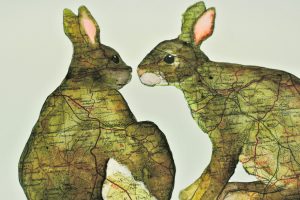
One of our favourite artists, Jenny Capon says this about German Etching;
“I love the fine detail that is captured when printing on German Etching paper, down to the tiniest brushstrokes. The paper has a thick high quality feeling with a lovely matte surface, and the colour it captures is deep and strong.”
We’re really pleased when an artist chooses a paper that suits their work and Jenny’s images on German Etching work really well together.
Photo Rag® 308gsm, I personally love this paper and it’s one that I recommend to many artists that contact us. At the same time as German Etching, Photo Rag® was brought in for its quality feel, weight and its smooth surface – we wanted a smooth paper to sit along the textured surfaces we already stocked. Photo Rag® 308 is used by such a wide range of customers, from digital illustrators to photographers to fine artists, its print quality draws in so many people – some who were adamant they wanted a textured surface and others who first thought they were willing to settle for a ‘lesser’ paper – the print quality sells itself, it’s very hard to argue with it.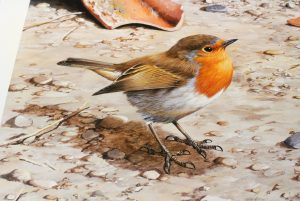
Terence James Bond, a famed wildlife artist, moved from a textured velvet surface to PhotoRag® 308gsm when he was looking for a sharper, better quality print. His publisher, Strix Editions, had this to say about Photo Rag® 308gsm;
“Working with Britain’s best loved Bird Artist demands the highest standards in the quality of reproduction of original works as prints. Having tried other alternatives we have found that ‘PhotoRag’ gives us the desired quality of reproduction in tonal and colour balance.”
The switch to Photo Rag® 308gsm for Terence James Bond’s prints produced an instantly improved result, the colour balance was better and the prints were noticeably sharper.
For a long time we had our range of papers settled, it wasn’t until 2012 that we started to think about expanding the type of papers we stocked, one question from customers cropped up time and time again; “do you offer a recycled or environmentally sourced papers?” A quick search lead us to Bamboo 290gsm, as environmentally sourced paper that didn’t just try to replicate the look and feel of another paper, it’s a paper that has its own characteristics beyond it’s make up of sustainable bamboo fibres. Its warm natural white colour and slight textured surface sets it apart from other papers in our range and like Photo Rag®, it’s a paper that is used by a number of different customers.
Michael Allan, from online store Scribblit, produces intricate digital illustrations, said this about the Bamboo paper;
“The Hahnemühle Bamboo 290gsm was the best choice for our prints as the colours are vibrant, the print’s edges are sharp and crisp, yet it offers a lovely subtle and quality texture.”
We love that people choose this paper for reasons beyond its environmental qualities.
William Turner was a paper that we – wrongfully now – knocked back a few times when exploring ideas of new papers. We thought it was too similar to German Etching 310gsm for people to decide against the two, but after a handful of customers started asking for it, we brought a roll and haven’t looked back. 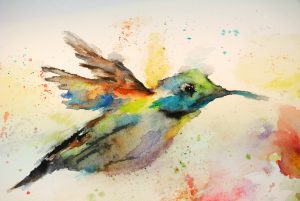 From a distance it might look similar to German Etching, as we first thought, but close up the two are quite different; William Turner’s surface is more pronounced, you can really feel the texture, the colour of the paper is also more natural, which our more traditional artists really like. Rhiannon Findlay is one of those artists, she’s always printed on William Turner and has this to say about it;
From a distance it might look similar to German Etching, as we first thought, but close up the two are quite different; William Turner’s surface is more pronounced, you can really feel the texture, the colour of the paper is also more natural, which our more traditional artists really like. Rhiannon Findlay is one of those artists, she’s always printed on William Turner and has this to say about it;
“Hahnemühle William Turner adds depth to large washes of colour and at the same time perfectly replicates the crispness of more detailed areas. It is a beautifully textured matt watercolour paper that provides vibrant, exhibition-quality prints.”
William Turner as genuine watercolour paper with inkjet coating is understandably selected by many traditional artists, reproducing watercolours and acrylic paintings, it’s also used by a few artists willing to do something a little different, and it’s the one paper that really surprises us with the result from the risk takers – digital illustrations with lots of flat colours that enables the textured surface to show through, and photographers taking advantage of its ability to print pin sharp images, while also gaining the warm tone and excellent colour representation.
Our Photographic Range
In 2013 we replaced an existing semi-gloss photo paper with Hahnemühle’s Photo Luster 260gsm, it was great to offer a photographic paper from the same manufacturer as all the fine art papers we offered, but only having one photographic paper wasn’t enough and last year (2015) we expanded the range. We now stock Photo Glossy 260gsm – alongside the Photo Luster – and the beautiful Photo Rag® Baryta 315gsm. The Baryta has been a wonderful addition to our range, it offers something unique and is being used by both photographers and artists.
Canvas Too…
Finally, a canvas, as if all the papers we’ve listed weren’t already enough, we use Hahnemühle for their canvas range as well. For years we’ve used Daguerre 400gsm for all our canvas prints, we offered a range of varnish as well to help protect and finish our customer’s canvas prints, taking advantage of the matt, satin and gloss finishes available. With an ever growing business, we’ve looked to increase efficiency and speed up our processes, customers want things quicker now than they ever did before, we knew there was canvas available that didn’t need to be varnished after printing – thus removing 1-2 days from our process – we just had to find one that would match the quality of Daguerre – we couldn’t have a poor alternative. We brought in test rolls from a number of companies – and I’m not just saying this – Leonardo 390gsm beat them all! The feel of the canvas gives an impression of quality, and the print reproduction and colour representation is excellent. We’re really pleased with it.
Situated in an Old Church Hall in Little Clacton a stones throw away from the south-east coast, Studio One Frames was established way back in 1970. They have been providing bespoke picture framing to trade and retail customers in the UK ever since. Fine Art Printing services were added in 2003 and have since helped artists, illustrators and photographers from the UK – and internationally – to reproduce and sell their work using industry standard paper, materials, software and equipment.
To find out more about dStudio and their services, visit their website by clicking here.
Thank you Martin for your piece and kind words!


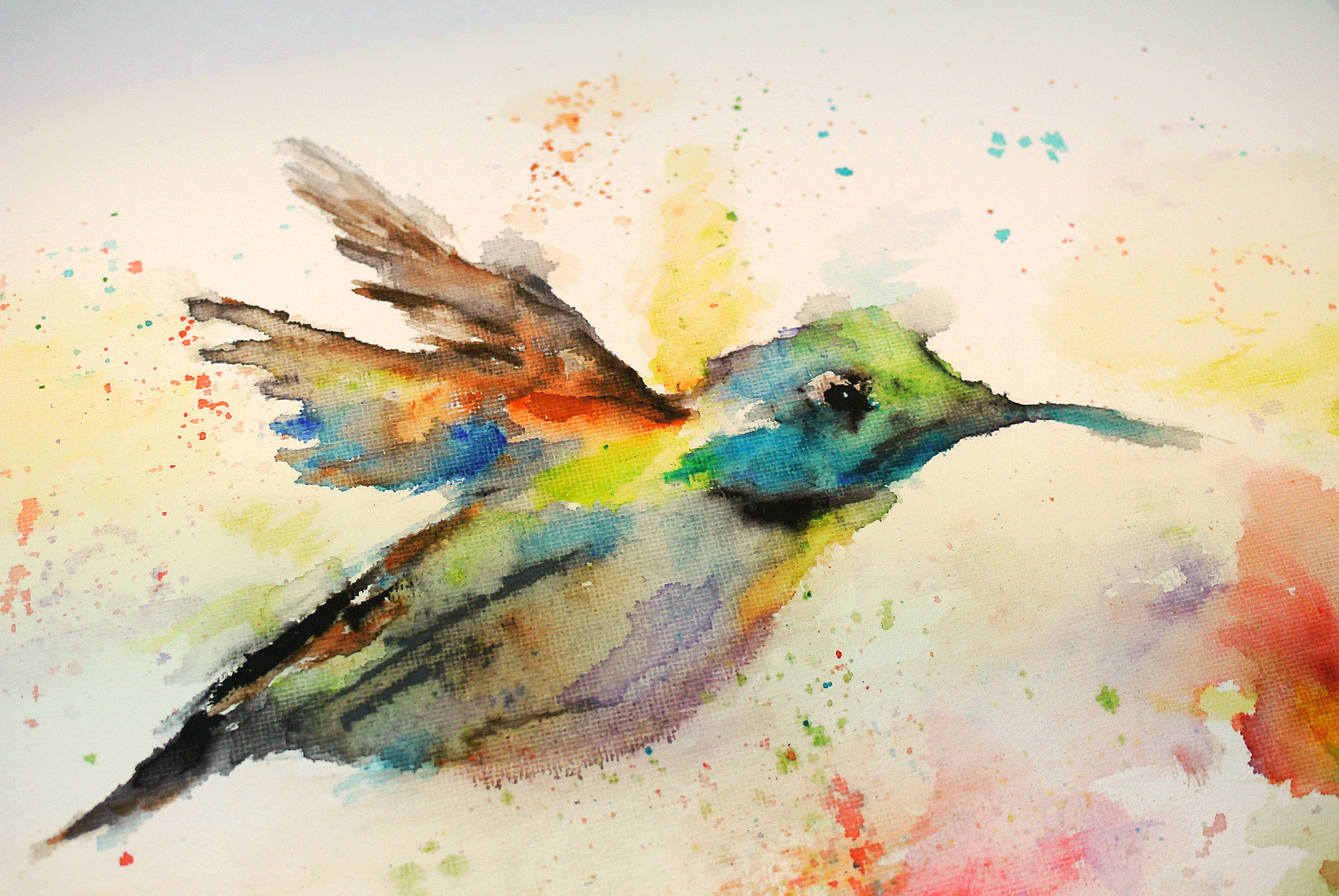
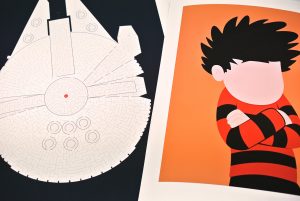






I don’t know how many other people might have read this, but I did and it was exactly what I was looking for (difference between German Etching and William Turner). Great, useful blog post. Thanks.